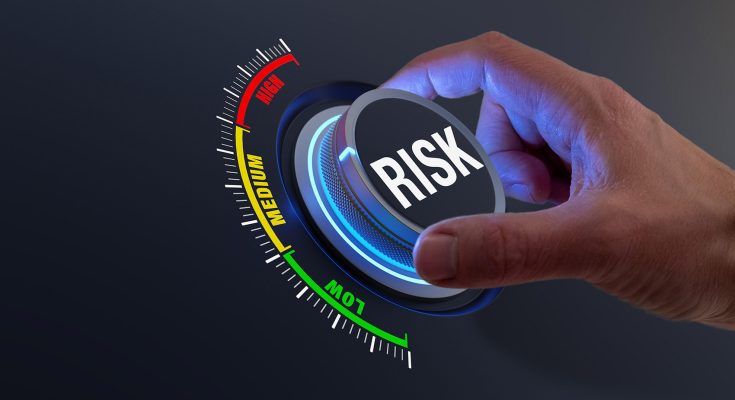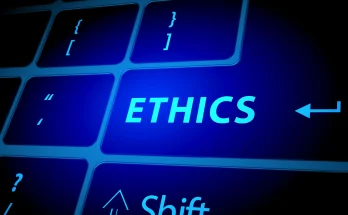JAKARTA, cssmayo.com – In an increasingly digital world, IT risk has become a critical concern for organizations of all sizes. As technology evolves, so do the threats that can compromise data integrity, operational efficiency, and overall business continuity. In this article, I’ll share my real talk on IT risk, focusing on how to identify potential threats, mitigate their impact, and learn from tough lessons encountered along the way.
Understanding IT Risk

What is IT Risk?
IT risk refers to the potential for loss or damage related to the use of information technology. This encompasses a wide range of threats, including cyberattacks, data breaches, system failures, and compliance issues. Understanding IT risk is essential for organizations to safeguard their assets and maintain trust with customers and stakeholders.
The Importance of Identifying IT Risks
Identifying IT risks is crucial for several reasons:
- Proactive Defense: Recognizing potential threats allows organizations to implement preventive measures, reducing the likelihood of incidents.
- Resource Allocation: Understanding risks helps prioritize resources and investments in security measures effectively.
- Regulatory Compliance: Many industries require compliance with regulations that mandate risk assessment and management processes.
Common IT Risks
1. Cybersecurity Threats
Cybersecurity threats are among the most significant IT risks facing organizations today. These include:
- Malware: Malicious software designed to disrupt, damage, or gain unauthorized access to systems.
- Phishing Attacks: Deceptive attempts to obtain sensitive information by masquerading as trustworthy entities.
- Ransomware: A type of malware that encrypts data and demands payment for its release.
2. Data Breaches
Data breaches occur when unauthorized individuals gain access to sensitive information. Common causes include:
- Weak passwords and authentication methods.
- Unpatched software vulnerabilities.
- Insider threats from employees or contractors.
3. System Failures
System failures can disrupt operations and lead to significant downtime. Causes may include:
- Hardware malfunctions.
- Software bugs or incompatibilities.
- Natural disasters affecting physical infrastructure.
4. Compliance Risks
Organizations must comply with various regulations regarding data protection and privacy, such as GDPR or HIPAA. Non-compliance can result in:
- Heavy fines and penalties.
- Reputational damage.
- Legal repercussions.
Identifying IT Risks
1. Conducting Risk Assessments
Regular risk assessments are essential for identifying IT risks. This process involves:
- Identifying Assets: Cataloging all IT assets, including hardware, software, and data.
- Evaluating Threats: Analyzing potential threats to each asset.
- Assessing Vulnerabilities: Identifying weaknesses that could be exploited by threats.
2. Engaging Stakeholders
Involving key stakeholders in the risk identification process is crucial. This includes:
- IT personnel who understand the technical landscape.
- Business leaders who can provide insights into operational impacts.
- Legal and compliance experts to ensure regulatory considerations are addressed.
3. Utilizing Threat Intelligence
Leveraging threat intelligence can enhance risk identification efforts. This involves:
- Monitoring industry news and reports on emerging threats.
- Participating in information-sharing networks with other organizations.
- Utilizing tools and services that provide real-time threat data.
Mitigating IT Risks
1. Implementing Strong Security Measures
To mitigate IT risks, organizations should implement robust security measures, including:
- Firewalls and Intrusion Detection Systems: Protect against unauthorized access and monitor for suspicious activity.
- Encryption: Safeguard sensitive data both in transit and at rest.
- Multi-Factor Authentication: Enhance access security by requiring multiple forms of verification.
2. Regular Software Updates and Patch Management
Keeping software up to date is critical for mitigating vulnerabilities. Organizations should:
- Establish a routine for applying patches and updates.
- Monitor for newly discovered vulnerabilities and address them promptly.
3. Training and Awareness Programs
Human error is a significant factor in many IT risks. Implementing training programs can help reduce this risk by:
- Educating employees about cybersecurity best practices.
- Conducting regular phishing simulations to raise awareness.
- Encouraging a culture of security mindfulness within the organization.
4. Developing Incident Response Plans
Having a well-defined incident response plan is essential for minimizing the impact of IT risks. This plan should include:
- Clear roles and responsibilities for team members.
- Procedures for detecting, responding to, and recovering from incidents.
- Communication strategies for informing stakeholders and customers.
Learning from Tough Lessons
1. Case Study: The Ransomware Attack
In a previous organization, we experienced a ransomware attack that encrypted critical data. The incident highlighted several key lessons:
- Backup Importance: Regular backups are vital. After the attack, we were able to restore data from backups, minimizing downtime.
- Employee Training: Many employees fell victim to phishing emails. Increased training helped raise awareness and reduce future incidents.
2. Case Study: Compliance Failure
Another tough lesson came from a compliance failure that resulted in hefty fines. The experience taught us:
- Regular Audits: Conducting regular compliance audits can help identify gaps before they lead to issues.
- Documentation: Maintaining thorough documentation of compliance efforts is crucial for demonstrating adherence to regulations.
Conclusion
Navigating IT risk is an ongoing challenge that requires vigilance, proactive measures, and a willingness to learn from past experiences. By identifying potential threats and implementing effective mitigation strategies, organizations can protect their assets, maintain operational continuity, and build trust with stakeholders.
As we continue to embrace technology, understanding and managing IT risk will remain a crucial component of successful business operations. Through real talk on techno hazards and the tough lessons learned, we can foster a culture of security that empowers organizations to thrive in the digital age.
Elevate Your Competence: Uncover Our Insights on Techno
Read Our Most Recent Article About Network Architecture!




